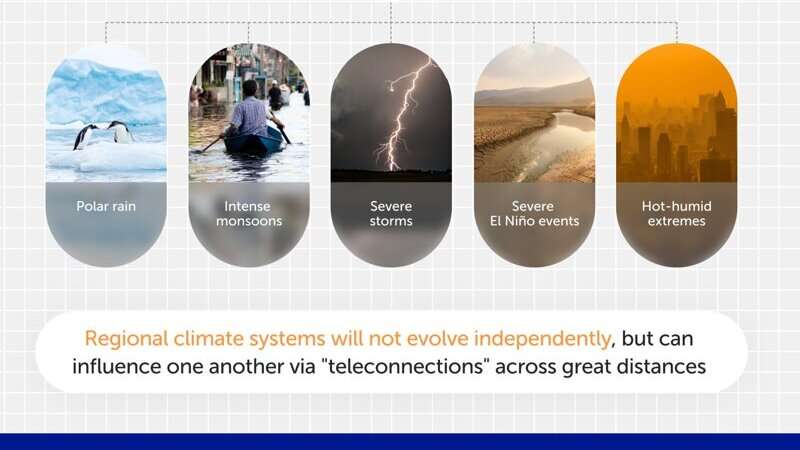Climate change is no longer a distant threat, but a pressing reality unfolding in our own backyards. A recent study published in Frontiers in Science sheds light on the crucial role of understanding regional climate impacts to guide effective adaptation policies. The study reveals a range of emerging climate signals, from intensifying monsoons in the tropics to strengthening storm tracks in the mid-latitudes, and the accelerating ice melt in the polar regions. These regional changes hold the key to safeguarding communities worldwide, as IPCC data suggests that climate change will continue to impact various sectors, including infrastructure, agriculture, and public health.

Regional Realities as Unfolding
The study underlines the worrying regional climate change signals that require immediate attention. Leaving out local amplifications or suppressions, the authors forecast major shifts in rainfall events across the tropics and subtropics, with monsoon systems building up. These changes can tipping the balance between devastating flooding, landslides and lower rainfall for agriculture — affecting billions of people who rely on these monsoon systems.
The study also suggests storm tracks could be intensified particularly over northwestern Europe if one journeys further towards the mid-latitudes, upping the chances of extreme wet and windy conditions. By using higher-resolution climate models to look at the effects of variability in, for example, monsoon precipitation or storm track rainfall, we can see that some regions will experience drought-related failures while flooding induced stress on critical infrastructure components and community health is prevalent elsewhere.
The Greatest Threat to the North Pole and Global Connectivity
It also shows the terrifying shift of the poles. More precipitation, in part because a smaller fraction of it will fall as snow and become ice to be lost to the sea, could help hasten land-ice loss and amplify sea-level rise. It is with this transition that coastal communities around the world face an existential threat. Along with the regional patterns, another significant finding by the researchers is how these changes are inter-related, particularly in terms of polar amplification (the phenomena that occurs because warming rates at the poles are faster than for the rest of the planet), and potentially modifies storm tracks which then control weather over large areas.
Scientists use the information to assist with international climate policy and local adaptation measures like the development of resilient infrastructure, early-warning systems, and sustainable agricultural practices.
This bridge will bring us to the Future of Climate Modeling and Monitoring
According to the study, the scientific and policy communities must work together across disciplines in an effort to deal with some of our biggest climate modeling and monitoring challenges. Improving the resolution of climate data, fostering the application of machine learning techniques, and building new models are needs for improving global simulations of complex climate phenomena at different temporal and spatial scales.
The researchers say these developments are critical for driving global climate policy and guiding local adaptation around the world with accurate, precise data. And in the absence of proper climate metrics and capacity, our policymakers and local communities operate with less information than they need to navigate these risks effectively, making concerted but un-informed or misdirected efforts.
With the growing consequences of climate change on the world, it has become imperative for us to understand how our home region changes with a changing climate. Bridging the sciences with policy offers a path to unlock effective climate adaptation strategies and protect our communities from growing challenges in a warming world.
